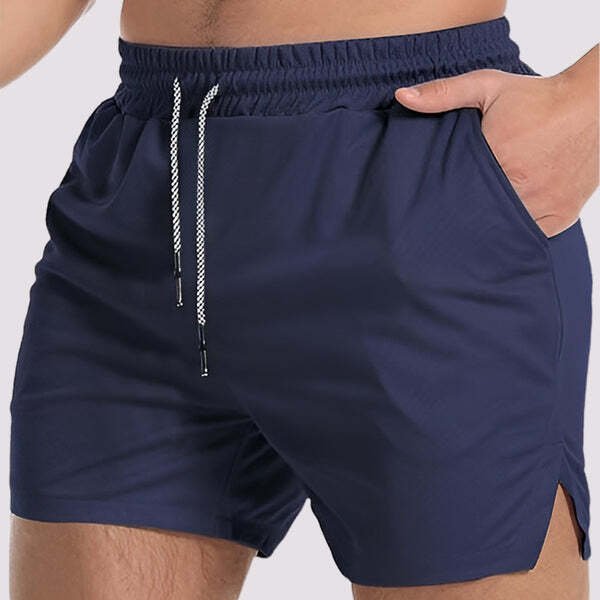You’ve probably trained in a pair of men’s gym shorts that felt fine at first glance until mid-squat or during a sprint, when the seams tug, the waistband slips, or the fabric drenches in sweat. That’s no accident. Great training men’s gym shorts shape your performance; lousy ones sabotage it. In this guide, I’ll draw from years on the gym floor to help you find the gear that feels like part of you, not just something you throw on.
Why Quality Shorts Change the Game
Let me explain what most people miss: shorts aren’t just clothing, they’re tools. Just like you’d swap a dented kettlebell for a solid one, your workout bottom matters. When gym shorts ride up, pinch, or cling, you’re subconsciously fighting them not focusing on your reps. Real-world insight: I’ve field-tested dozens of styles and brands and the difference isn’t subtle. It’s game-changing.
Breaking Down Styles That Make Sense
High-Leg, Movement-First Models
These are based on athletic wear from gymnastics and sprinting high-cut, stretchy and stripped down. These styles let you go deep in squats or power through box jumps without fabric stopping you cold. A training partner once said, it’s like freedom for your legs.
Liner-Integrated Two-Layer Designs
A compression short underneath with a lightweight outer shell this combo locks in support while protecting modesty. Perfect for crossover training days when you move from lifting to cardio. I wore a pair through a full circuit bench, row, sprint and never had to adjust mid-session.
Reinforced Hardshell Shorts
Picture skate-inspired shorts, thicker, tougher, built to take a beating. Sled runs, rope climbs, sandbag drags, these men’s gym shorts are up for it. One friend survived a CrossFit competition with zero tears because of that tough shell and heavy stitching.
Anatomy of an Exceptional Pair
Fabric That Works for You
Forget cotton blends. These trap moisture and slow you down. Instead, opt for polyester, with moisture-wicking threads and four-way stretch. Quick-dry fabric means no clinging after cardio or sweating profusely.
Waistband That Stays
I’ve worn waists that stretch out after a few washes. Now, I go for mid- to high-rise with firm but flexible elasticized bands. They stay secure during cleans and presses, without squeezing your guts.
Leg Openings That Move
A slim hem or elastic cuff keeps the liner in place without cutting circulation. Too loose? You get distracted by the fabric. Too tight? You feel restricted. The perfect opening feels just right, moves with your hips and stays put.
Fit vs. Function: Finding Balance
Here’s a bold claim: you don’t have to sacrifice style for performance. Neutral tones navy, black, charcoal are timeless and crisp. Subtle detailing, like contrast stitching or a small patch pocket, adds flair without crowding the design.
Styling tip: pair with performance tops and neutral sneakers and you look sharp whether you’re crushing deadlifts or grabbing coffee post-workout. A clean look boosts confidence even if you’re just lifting for yourself.
Real Stories, Real Gain
Transformation Through Gear
At one gym, a trainee couldn’t squat below parallel without adjusting his shorts. We swapped him into stretch liners with shorter hems immediately and his depth improved. No style tricks, just freedom integrated.
Morning Circuit Testing
I ran a sprint-ladder session in two different pairs. The cotton-blend pair felt soaked and heavy after two rounds; the synthetic pair felt dry and free even after six intervals. Recovery? Night and day.
Maintenance for Longevity
Treat your shorts like investment-grade equipment. Cold wash, gentle cycle, line dry. No fabric softener kills moisture tech. Never tumble dry. That little laundry care protects stretch, wicking fibers and elastic for dozens of sessions.
I rotate two or three pairs to even out wear and preserve snap. Keeps your gear or wallet from burning out early.
FAQ Section
What kind of shorts are best for full-motion workouts?
Shorts with athletic-inspired cuts, higher legs, stretchy materials allow deep squats, jumps, and full hip mobility without riding up or restricting movement.
Are liners essential in training shorts?
A built-in compression layer stabilizes muscles and keeps fabric in place. Ideal for sprinting or plyometrics. For heavy lifting, looser outer shells with liners give space and airflow.
How often should I replace my training shorts?
Between 8–12 months if used regularly. Check waistband integrity, stitch strength and moisture wicking. Rotate pairs to extend life.
How do I wash shorts to preserve performance?
Cold water, gentle cycle, no fabric softener, hang dry. Skip hot dryers and they degrade materials over time.
Mindset Matters
Have you ever reached for a gear item that just feels wrong? Shorts should never be that. They should enhance comfort and confidence, not distract or irritate. My rule: if you notice them during a workout, they’re not working for you.
Final Action Plan for Better Gear
Tonight, lay out your active shorts. Stretch them. Inspect seams. Feel waistband: does it invert under strain? Pull a 15-second lunge circuit. Did the fabric shift? Decide what stayed and what didn’t.
This week, order one pair in each category movement-first, liner-centric, tough shell. Train in each type and compare how they perform across speed, lifts and fatigue.
Conclusion
Performance gear should feel invisible yet empowering. When your shorts sync with your movement, you’re free to chase PRs, not wrestle clothes. Upgrade thoughtfully, maintain wisely and rotate prime pieces that earn their place in your rotation. That’s how smart gear propels you forward. The best men’s gym shorts are from Gravity Force. So don’t waste time and go and purchase the best to elevate your wardrobe.
Recommended Article:
